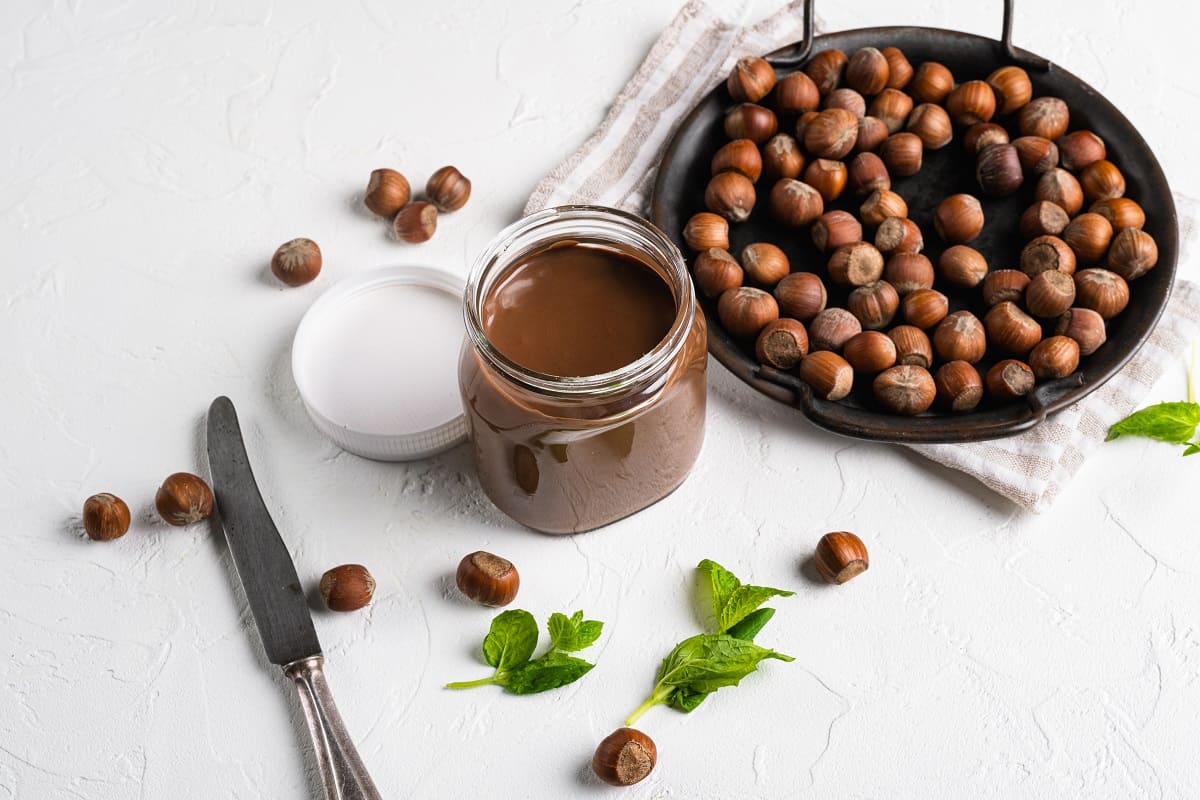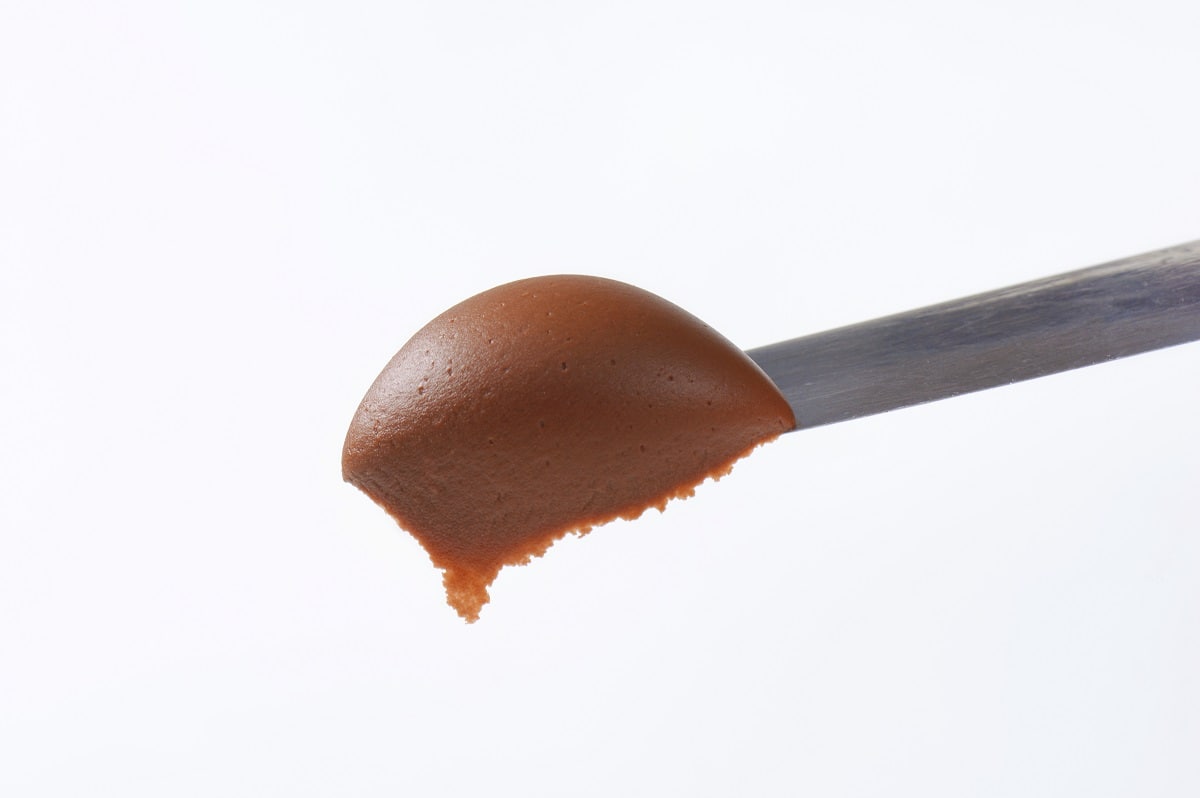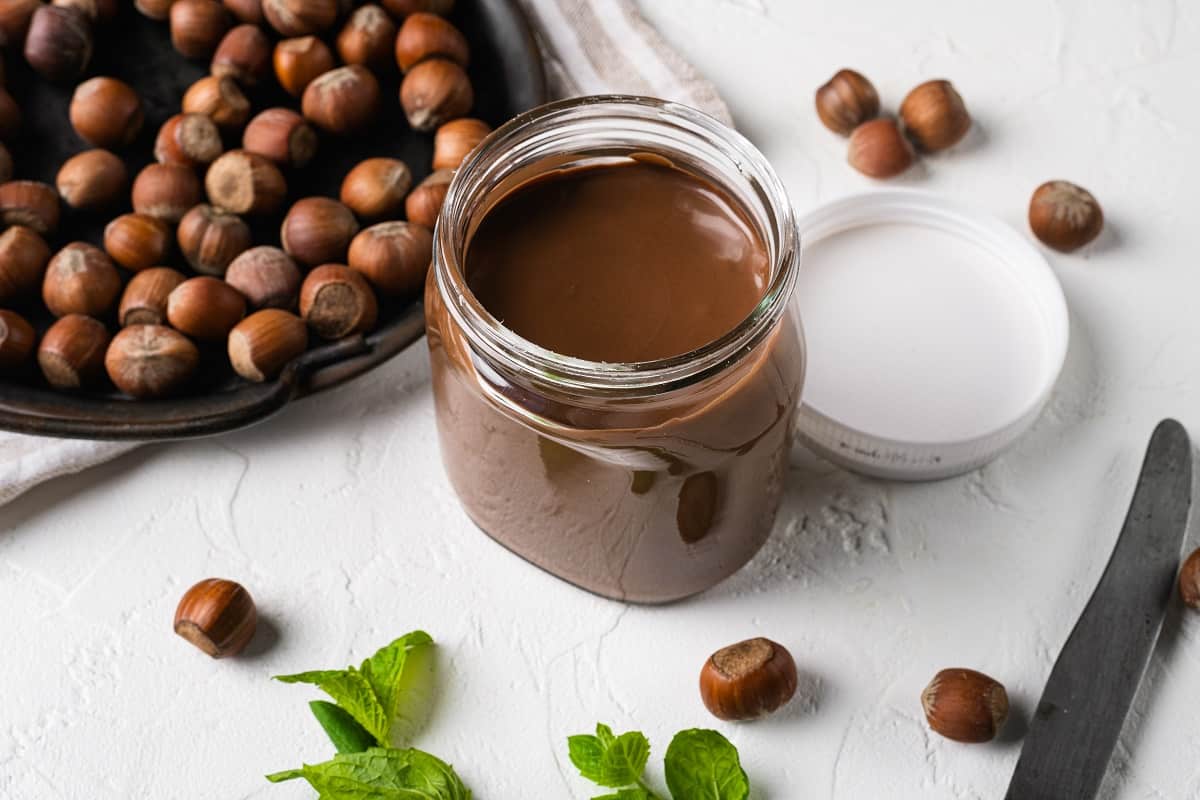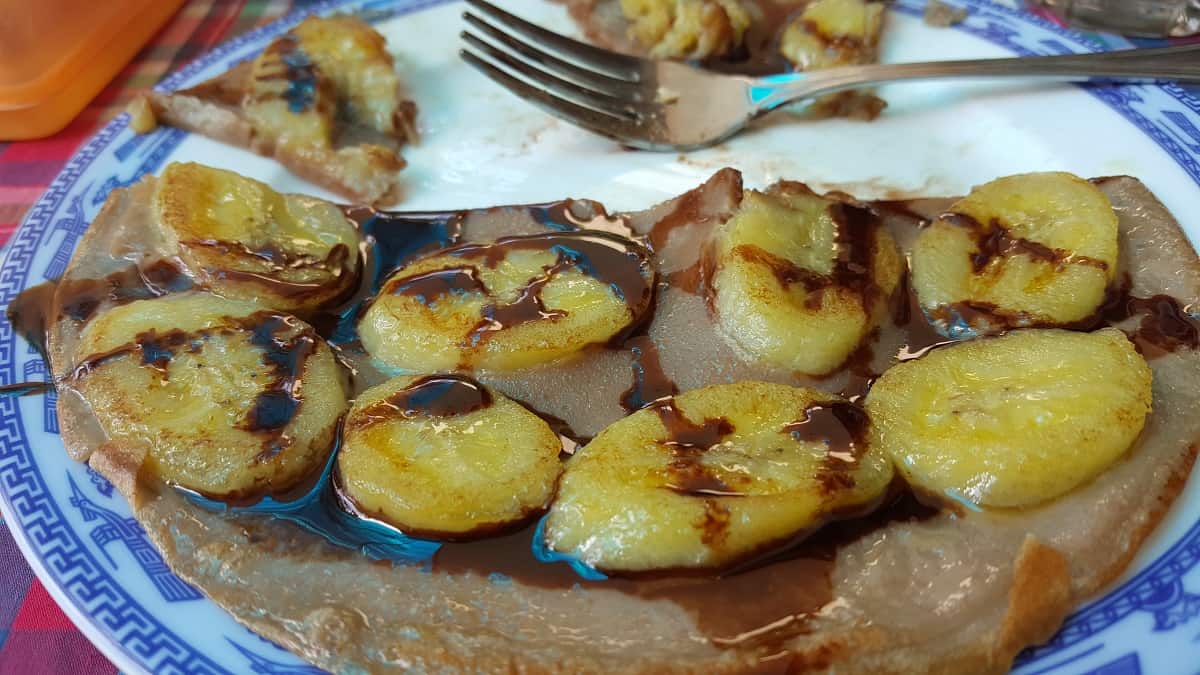Get ready to indulge in the widely popular Italian chocolate hazelnut confection, also known as gianduja. If nutella is the king of household chocolate spreads, then consider gianduja to be the cream of the crop and originator in the chocolate-hazelnut world.
Its enticing texture and delicious flavor will captivate anyone, so join me on a delectable adventure as we explore the irresistible allure of gianduja. Below we cover its history, the essential components, how gianduja is made, and some popular flavor combinations.

Jump to:
🎓 What is Gianduja? (Ingredients)
Gianduja is an Italian hazelnut and chocolate confection invented in Italy and pronounced john-DOO-yah, though it was originally spelled gianduia.
This chocolate hazelnut paste is a luxurious marriage of velvety smooth chocolate, rich, creamy hazelnut, and sugar. Traditional gianduja makers prioritize using high-quality ingredients, including a premium variety of hazelnuts that grow in abundance in the pristine Langhe Hills, part of today’s UNESCO-listed World Heritage Site.
Modern varieties of gianduja paste may contain other ingredients such as hazelnut butter, vanilla bean or extract, sugar icing, cocoa powder, cocoa butter, cinnamon, milk powder, salt, and even palm oil.
Products labeled 'gianduja' should consist of at least 20% hazelnuts and 32% cacao solids. However, some gianduja manufacturers include up to 55% hazelnuts to make this coveted paste, deepening the nutty creaminess and making it less sweet.
Gianduja’s tastes sophisticatedly sweet, delightfully creamy, nutty, and fudgey all in one. Its rich and decadent flavor is ideal for spreading on toast, stuffing pastries, or simply eating by the spoonful; you can even nuke it for a few seconds and then drizzle it on ice cream.
The chocolate used in gianduja is in between light dark chocolate and dark milk chocolate. This results in a balanced sweetness and deep chocolatey flavor, and varies depending on whether it's a classic or a sweeter gianduja recipe.
The nuttiness of hazelnuts shines through in the spread, as the combination of the ingredients results in a smooth, indulgent chocolate paste. Gianduja paste is available in a range of forms, from crunchy bars to smooth and creamy spreads.

🔪 How is Gianduja Made?
Gianduja is made by roasting hazelnuts until golden brown and then crushing them into a fine nut butter. This butter is then mixed with chocolate and often extra sugar to make a delicious paste that's layered and then shaped.
You can even make gianduja at home by following these steps:
- Toast and Prepare the Hazelnuts.
- Grind the Hazelnuts.
- Melt the Chocolate and Cocoa Butter.
- Combine Melted Chocolate and Hazelnut Butter.
- Add Sugar and Flavorings.
- Set the Gianduja, and Enjoy!

🌰 History of Gianduja
Gianduja dates back to the early 1800s, under the reign of French Conqueror Napoleon Bonaparte. In 1806, Napoleon conquered northern Italy and declared war against Britain by enforcing blockades on English imports to ports under French control, significantly limiting commodity supplies.
The introduction of Napoleon's Continental System, after naming himself emperor in 1806, signaled the start of a brief but severe period of commercial disruption that was particularly significant in the history of gianduja (the cacao trade).
Napoleon's crackdown on neutral ships prompted a British counter-blockade which was followed by an embargo by the United States in 1807.
During this time of international strife, it was believed that innovative Piedmontese (Italian) pastry chefs and chocolatiers turned to prized hazelnuts and other raw ingredients to compensate for the skyrocketing cost and decline in the supply of cacao and sugar.

Humble Origins for a Decadent Spread
A chocolatier from the region of Turin created gianduia, a dense, rich paste made from hazelnuts, cacao liquor, and sugar, using the hazelnuts to take the place of expensive cacao. Many Italians grew fond of the chocolate hazelnut treat, which remained popular even after the war.
Hazelnuts are a peasant meal in Northern Italy. However, the best hazelnuts are from Piedmont, and are sought-after internationally for making gianduja, and the paste is synonymous with Piedmontese culture and cuisine.
The area is well-known for its high-quality chocolate - as gianduja is a popular commodity that helps many local businesses - and hazelnuts, as it’s a key crop in the region.
Carnival is a happy time of year in Piedmont and other parts of Italy, with parades, costumes, and cuisine, and the rich, nutty flavor of gianduja is famous during the late winter Carnival season.
In the Italian commedia dell'arte, "Gianduja" is a carnival character that embodies the quintessential Piedmontese. The character is a fun-loving, cheeky albeit honest and generous peasant who enjoys good food and wine.
Gianduja is a popular carnival fare among both locals and visitors. It’s used in a range of delicacies and pastries, including cakes, cookies, and chocolates.

✔️ Gianduja vs. Nutella
Gianduja and nutella are both chocolate-hazelnut creations with shared roots, but they differ significantly in composition, taste, and history.
It was only post-WWII cacao scarcity that led Pietro Ferrero to invent Nutella in the 1940's, adapting his recipe from the traditional gianduia recipe of 70% hazelnuts and 30% chocolate. Initially, Ferrero made solid loaves of his conconction, with just a trace of chocolate.
But eventually these small delicacies evolved into a more affordable, spreadable version named Supercrema Gianduja, which was later renamed Nutella in 1964. Nutella today is known for its sweet taste and creamy texture, still containing a relatively small amount of hazelnuts (13%) and cacao (negligible), both sourced globally.
In contrast, gianduja is a denser, more traditional spread with a richer flavor, using at least 20% Italian hazelnuts and 32% cacao liquor, made by grinding roasted cacao beans and hazelnuts with sugar and cocoa butter (and sometimes milk).

🍫 Gianduja Uses
For centuries, gianduja paste has been used mainly as an ingredient to enhance the flavor and texture of bread, pastries, and chocolates called gianduiotti, which are small individual versions of this creamy chocolate hazelnut delight.
And while I’m content with eating a spoonful of gianduja straight from the jar, similar to its less dense cousin, there are many other ways to enjoy the spread verison. For instance, spreading it on a baguette, freshly baked croissant, and pancakes or waffles.
You can easily make an indulgent dessert pizza with gianduja simply by heating pizza dough in the oven, smearing mascarpone and gianduja on it, and topping it with your favorite sliced fruits. Likewise, you can skip the mascarpone and top off the pizza dough with gianduja and sprinkle some marshmallows on before popping it into the oven.
Adding some heavy cream to gianduja will turn it into ganache and gianduja, which can then be used in a lot of recipes like chocolate truffles, bonbons, and other pastries. It’s also used in numerous desserts such as cakes, mousses, crémeux, ice creams, and so on.
Another great way to use up gianduja is to melt it and fold it into a vanilla or chocolate ice cream base to turn regular ice cream into a nutty, chocolatey, creamy delight.
Making a classic torta gianduiotto is also a delicious use of the spread. It’s a luscious cake composed of layers of moist sponge cake, creamy chocolate hazelnut cream, and crunchy chopped hazelnuts.
Cremini wafers are also popular; these wafers have a crisp outer shell and a creamy chocolate-hazelnut crème within - they're simply exquisite. Apart from smearing it on bread or waffles, gianduja is an excellent dipping fruit.
Berries, mangoes, melons, and bananas all pair well with this decadent and smooth spread.

🙋🏻♂️ Gianduja FAQ
Gianduja is a type of Italian chocolate made from hazelnuts, cacao liquor, and sugar. The paste can also be shaped into bars or used as a filling in desserts like cakes and truffles when mixed with cream. According to the European Union, there should also be at least 20% hazelnuts and 32% cacao liquor for a product to be labeled as gianduja.
Strictly speaking, gianduja isn’t the same as nutella, though the two may have similar ingredients. Gianduja is the mother spread from which the less-dense nutella originated, and can still be swapped out in Nutella dessert recipes.
While both gianduja and Nutella are chocolate and hazelnut spreads, they differ in their ingredients and manufacturing methods. Gianduja is a traditional Italian food with a higher percentage of hazelnuts, whereas Nutella is a commercial product with added components such as palm oil and milk powder.
Gianduja is prepared from three simple ingredients: hazelnuts, chocolate, and sugar. The hazelnuts add a nutty flavor and a creamy texture. In contrast, the chocolate and sugar provide sweetness and depth to the entire flavor. It also has a strong aroma that will entice your taste buds even before you take a bite.
Gianduja, also known as gianduia in Italy, is derived from the Piedmontese peasant character gianduja, who is fun-loving but cheeky, humble, and giving. Today, Gianduja is a popular ingredient in a range of Piedmontese desserts and pastries that are served during carnival season or year-round for locals and tourists alike.
Gianduja originated in Italy, where it is known as gianduia. It is the correct Italian spelling and also more indicative of the word's pronunciation, as the letter "j" does not exist in the Italian alphabet. The absence of the word from the most widely used and respected unabridged historical dictionaries shows that it lacks a standard, recognized spelling in the English language.

















Comments
No Comments